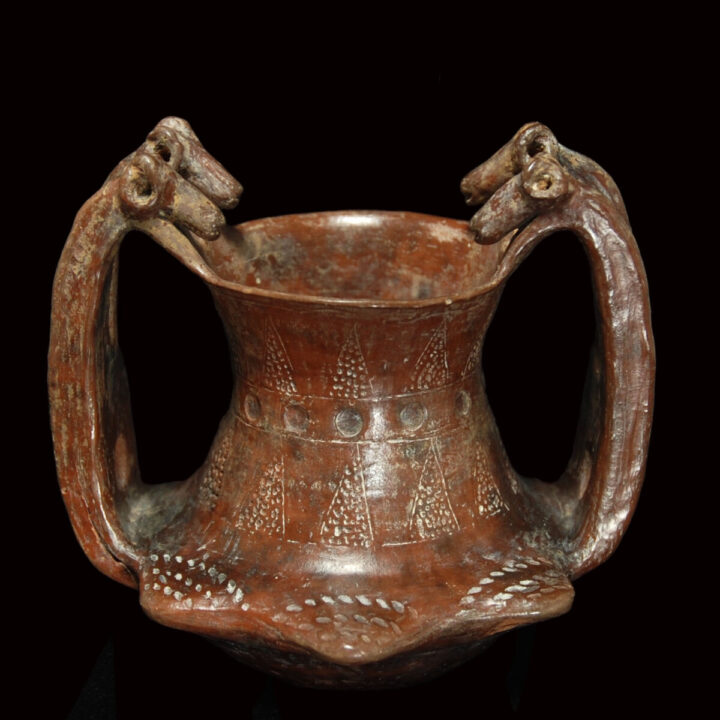Faliscan Kantharos with Ram Heads
Culture: Faliscan
Period: around 650 B.C.
Material: Terracotta
Dimensions: 10.6 cm high
Price: Sold
Ref: 4188
Provenance: Dutch private collection, acquired between 1965 and 1990. Thence in a family estate. With an old collection photograph from 1977 and a confirmation from the heirs.
Condition: One ram head reattached, a small ancient stress crack on one handle, otherwise beautifully preserved.
Description: Elaborately worked out terracotta kantharos from the land of the Falisci, who were contemporaries of the Etruscans and settled south-east of them around today's Civita Castellana in Lazio. The vessel of reddish-brown clay belongs to the Impasto ware and should imitate metal with its lustre. The thin-walled corpus swings out in six large ribs at the bottom. Here the two vertical handles start. They are openwork and merge into sculptural ram heads, which look over the rim. The entire vessel is decorated with incised and hallmarked decoration. The markings were filled with white chalk, remains are especially preserved on one side of the vessel. The base is slightly indented. This kantharos is a masterful example for the Faliscan pottery from the mid-7th century B.C., which not only wanted to imitate metal, but also adorned the spout or handle with sculptural elements. See for more examples: "Die Etrusker. Von Villanova bis Rom", Florian S. Knauß und Jörg Gebauer (Hrsg.), Munich 2015, pages 96 ff.






